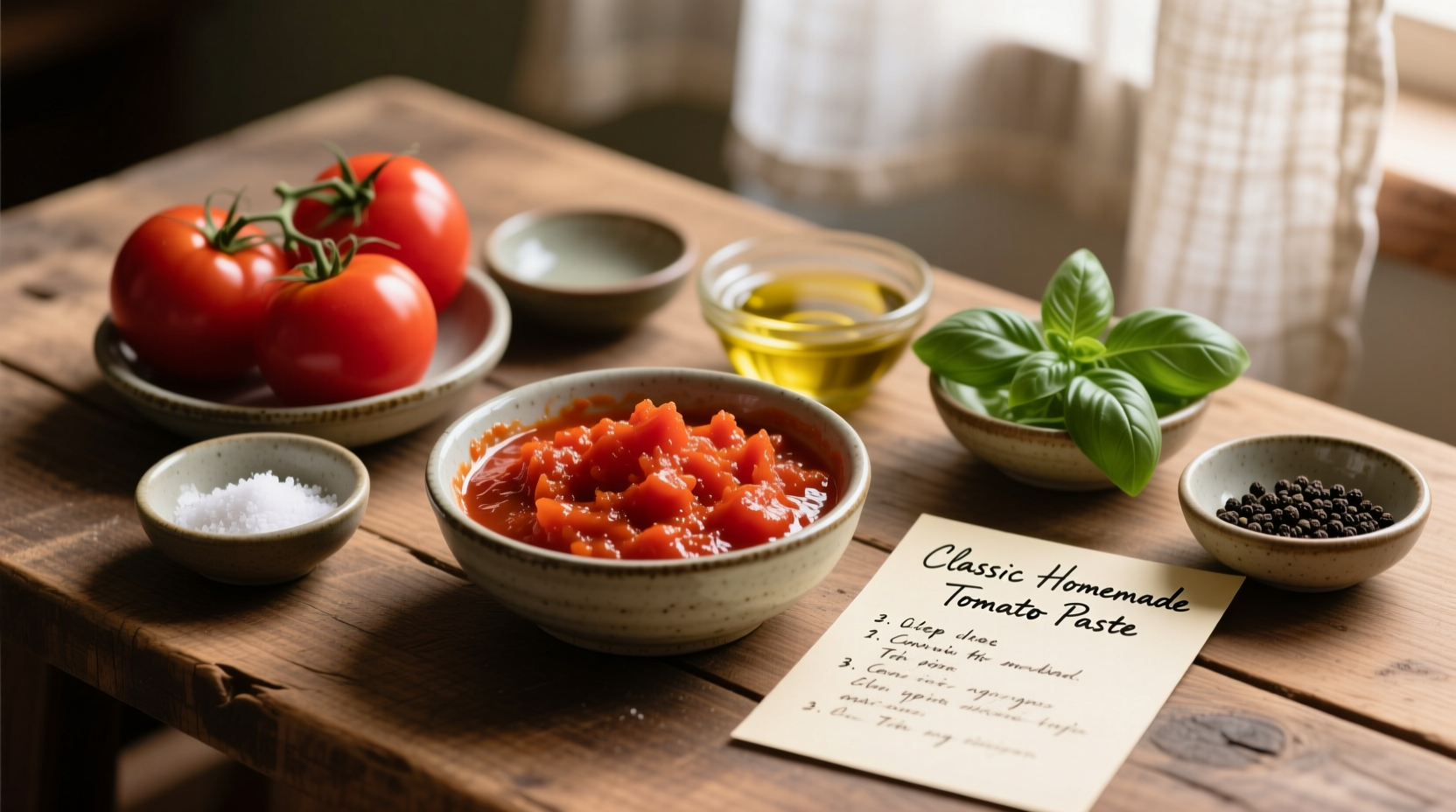Why Homemade Tomato Paste Outperforms Store-Bought
Commercial tomato paste often contains citric acid, calcium chloride, and preservatives to extend shelf life. When you make your own, you control every element—starting with peak-season tomatoes at their flavor peak. According to USDA food safety guidelines, homemade versions without additives maintain optimal quality for 6 months when properly frozen, versus 12-18 months for commercial products with preservatives.
| Characteristic | Homemade Paste | Store-Bought Paste |
|---|---|---|
| Ingredients | Tomatoes only | Tomatoes, citric acid, calcium chloride |
| Flavor Profile | Bright, complex, fruit-forward | Flat, sometimes metallic |
| Cost per Cup | $2.50 (seasonal tomatoes) | $1.80 |
| Shelf Stability | 6 months frozen | 18 months unopened |
Selecting the Perfect Tomatoes for Maximum Flavor
Roma (plum) tomatoes dominate professional kitchens for paste-making due to their meaty flesh and low moisture content. The University of California Agriculture Department confirms Romas contain 30% less water than beefsteak varieties, reducing cooking time significantly. Look for deep red, firm tomatoes with minimal cracks—avoid refrigerated specimens as cold storage destroys volatile flavor compounds.

Equipment Checklist for Foolproof Results
- 6-8 pounds ripe Roma tomatoes (yields 1 cup paste)
- Large stainless steel or enameled pot (avoid aluminum)
- Food mill or fine-mesh strainer
- Wooden spoon (never metal with acidic tomatoes)
- Ice cube trays for portioning
Step-by-Step Preparation Timeline
Follow this precise sequence for optimal flavor development without scorching:
- Prep (20 minutes): Score tomatoes, blanch in boiling water for 30 seconds, then transfer to ice bath. Peel and roughly chop.
- Initial Simmer (1.5 hours): Cook tomatoes uncovered over medium heat, stirring every 15 minutes. The acid in tomatoes reacts with metal pots—use wooden utensils to prevent metallic flavors.
- Concentration Phase (2 hours): Reduce heat to low. Stir every 10 minutes as liquid evaporates. Watch for color change from bright red to deep brick.
- Final Thickening (30 minutes): When paste coats the spoon, pass through food mill to remove seeds and skins. Continue cooking until it mounds slightly when dropped from spoon.
Storage Solutions That Preserve Fresh Flavor
Proper storage prevents freezer burn and flavor degradation. The National Center for Home Food Preservation recommends:
- Cool paste completely before freezing
- Portion into 2-tablespoon increments (standard recipe measurement)
- Press plastic wrap directly onto surface before sealing containers
- Label with date—use within 6 months for peak flavor
Never store homemade tomato paste in metal containers—the acidity causes leaching that creates off-flavors. Glass jars leave 1-inch headspace to accommodate expansion.
Troubleshooting Common Paste Problems
Even experienced cooks encounter these issues. Here's how to fix them:
- Too watery? Return to low heat for 15-20 minutes. Stir constantly to prevent scorching as water evaporates.
- Bitter taste? You likely used underripe tomatoes. Add 1 teaspoon honey per cup and simmer 5 minutes to balance acidity.
- Darkened color? Heat was too high during final stages. Next time maintain gentle simmer—the ideal color resembles dried brick.
- Separating liquid? This indicates incomplete cooking. Continue simmering while stirring until fully homogenous.
Creative Applications Beyond Pasta Sauce
Expand your culinary repertoire with these professional chef techniques:
- Whisk 1 tablespoon into salad dressings for umami depth
- Add to meatloaf for moisture retention without sogginess
- Stir into scrambled eggs for vibrant color and subtle sweetness
- Blend with roasted garlic for artisanal pizza base
- Mix with olive oil for instant marinara (1:3 ratio)











 浙公网安备
33010002000092号
浙公网安备
33010002000092号 浙B2-20120091-4
浙B2-20120091-4